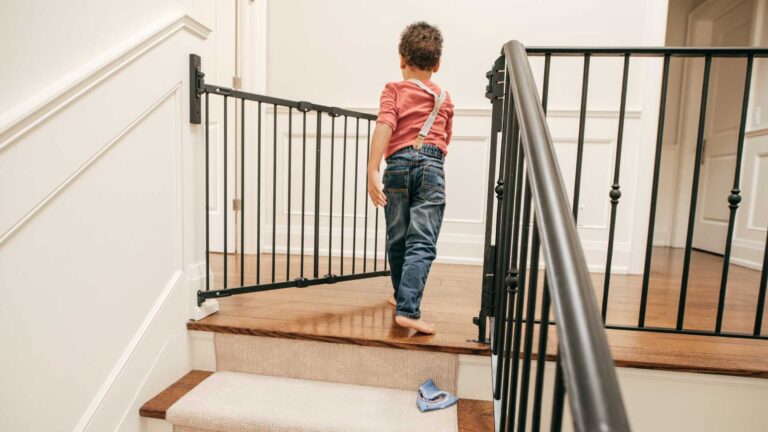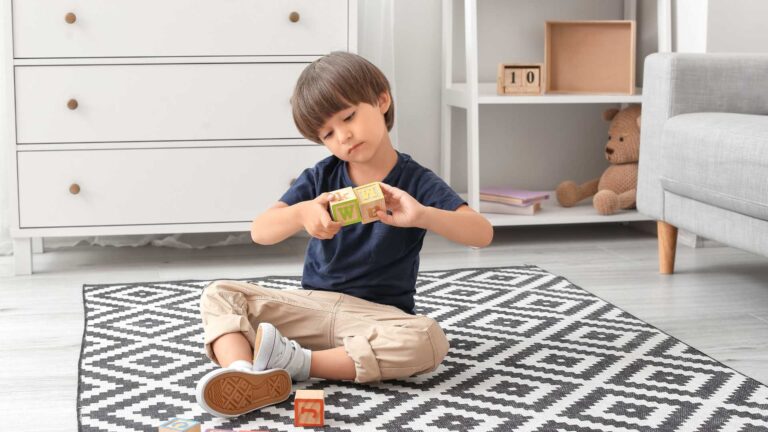How do I make my autistic child’s house safe?
As parents and caregivers of children, we have a responsibility to ensure a safe home environment, a task that takes on even greater importance when we live with children who have Autism Spectrum Disorder (ASD). We have all experienced that moment of paralyzing panic when, through brief carelessness, we lose sight of our loved ones. Although these distressing situations are often short-lived, it is crucial to recognize that children with autism have a greater propensity to wander, which emphasizes the need to reinforce home security for autism.
In addition to the risk of wandering, there are other safety-related considerations that parents and caregivers of children on the spectrum must address to ensure an autism-safe home. If you are wondering, “How do I make my autistic child’s house safe?” in this ABA Centers of America blog, we present seven practical steps for neurodiverse families in New Hampshire and Massachusetts to improve home safety for autism and provide valuable guidance in creating a safe environment for children with ASD.
7 Home Security for Autism Considerations
It is usual to overlook critical aspects of safety in our home, as we are infrequently conscious of the potential dangers that everyday objects such as furniture or doors can pose. However, for children on the autism spectrum, the home can harbor significant risks if parents do not carefully address them. Here are some priority considerations for ensuring home security for autism:
- Toxic Substances: Most household cleaning products contain harmful chemicals, posing a danger to young children and affecting home safety for autism. Storing products with toxic substances under lock and in specific locations away from central areas, such as the garage or basement, is essential.
- Furniture: Children often play on and climb furniture, but failing to secure heavy furniture and appliances to the wall can pose a significant danger. Make sure your furniture and appliances have brackets that hold them securely in place to ensure safety at home for children with autism.
- Swimming pools: The risk of drowning is a primary concern for home security for autism. If there is a pool at home or in the neighborhood, following drowning prevention measures recommended by the Massachusetts government or your state is crucial.
- Fire: The risk of fire is a latent danger that requires preparation, especially when there are children with autism at home. Customizing smoke detectors with soothing instructional recordings, practicing fire drills, and visiting a local fire station are helpful strategies.
- Hot Water: Identifying temperatures can be challenging for children with autism, making hot water a safety concern at home. Teaching children to differentiate between hot and cold water faucets, using stickers, and monitoring the water temperature on the water heater are essential practices to prevent burns.
- Doors: Wandering is a significant safety concern for families with autistic children. Doors and windows require special attention to ensure home safety for autism. Using locks, hiding keys, and adding additional protections, such as alarm systems, are beneficial measures. Providing your kiddo an identification with contact information is also critical.
- Develop an Emergency Plan: Understanding the potential hazards present in the home, school, and community is essential to creating an effective emergency plan. You can use the guide provided by the National Autism Association as a detailed example for developing your emergency plan, especially if your child tends to wander.
Extra Home Security for Autism: Tackling Wandering
Wandering represents a significant safety concern for many parents and caregivers of children with autism. To strengthen home safety for autism and reduce the risk of elopement, consider following these tips:
- Create a calm home environment: Identify stressors in the environment that may trigger elopement in children with ASD. Noises, bright lights, and chaos often provoke wandering behaviors in children. Knowing your child’s specific triggers and avoiding those stimuli can be crucial.
- Encourage communication: Curiosity can be a common trigger for wandering in children with autism, as the simple need to head to the park or beach to distract themselves can motivate them to leave the house unsupervised. Please encourage your child to communicate their desire to go out with an adult or caregiver, which will facilitate the development of strategies to prevent elopement.
- Set schedules for going out: Defining expectations and boundaries is beneficial for children with autism. Spontaneous outings can be incredibly challenging, so creating a schedule with daily activities helps prepare your child for what is to come during the day. If your child enjoys going out, you can include a designated time to visit the park or take a walk.
- Use monitoring technology: We cannot overstate the value of identification and monitoring tools for children with ASD who have difficulty communicating verbally and are at risk of wandering. Wristbands, necklaces, GPS devices, information marked on clothing, or medical alert tags are resources that make it easy to communicate relevant information to get help if needed.
ABA Centers of America and Autism Care
The safety of our children with autism is of utmost importance. At ABA Centers of America, we understand that being a caregiver for children, especially those with autism, can be challenging, and it is understandable that some aspects may go unnoticed. However, we are here to support America’s neurodiverse families by providing a supportive environment and ensuring home security for autism and everyone.
We recognize that the home is the heart of our children’s learning and development, and it is the place where they feel most comfortable. For this reason, our in-home ABA therapy is an exceptional service designed to help children with autism improve their communication, social, learning, and behavioral skills, thereby reducing the risks of elopement and improving home safety for autism.
If you would like more information about our in-home ABA therapy services, feel free to call us at (844) 923 4222 or contact us online to schedule a free consultation. On the journey to neurodiversity, you can count on ABA Centers of America.







